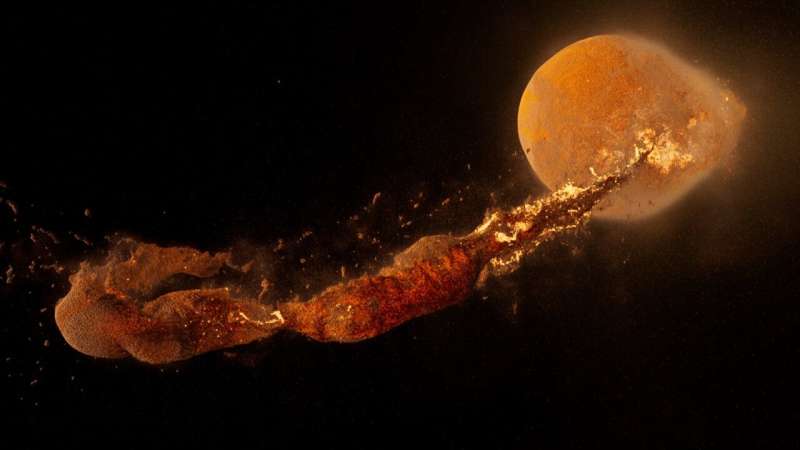November 4, 2023 report
This article has been reviewed according to Science X's editorial process and policies. Editors have highlighted the following attributes while ensuring the content's credibility:
fact-checked
trusted source
proofread
Saturday Citations: Moon origins, rat whimsy, microgravity orientation. Plus: Starfish are bodiless heads, it turns out

Good morrow and a cheerful week's end to you. This week, we reported on notable developments in the lack of starfish body development. Physicists used a new method to revisit the planetary collision that likely formed the moon and might have found chunks of doomed planet Theia deep in the Earth's mantle. And in experiments, rats, as seen in the subway, are demonstrating the power of imagination, as seen on LeVar Burton's "Reading Rainbow." Worlds collide!
Starfish noteworthy
Hey, nice bilaterally symmetrical body plan you got there, primate, did you get it from your mom? Most species demonstrate bilateral symmetry, or at the very least, some kind of distinction between their head and body. And then you have starfish, flaunting their five-axis symmetry in evolutionary defiance of the differentiation between starboard and port, upstairs and downstairs.
"What's their whole deal?" said researchers at Stanford University and UC Berkeley. Using molecular and genomic techniques, they found gene signatures associated with head development nearly everywhere in the bodies of juvenile sea stars; genes that code for torso and tail sections are completely missing from starfish genomes.
Laurent Formery, a postdoctoral scholar and lead author of the new study says, "It's as if the sea star is completely missing a trunk, and is best described as just a head crawling along the seafloor. It's not at all what scientists have assumed about these animals."
Theia indigestible
Astronomers have long theorized that the Earth's moon was the result of a titanic collision between primordial Earth, called Gaia, and a Mars-sized world called Theia. Scientists thought matter comprising Theia coalesced in orbit and became the moon because two independently formed planets should have their own distinct compositions. But the compositional similarities between Earth and the moon challenge this model.
A new study based on computational fluid dynamics methods has uncovered a massive anomaly deep in the Earth's interior that could represent a small amount of Theian material that entered the mantle at the time of the great impact.
The researchers believe that this Theian mantle material is enriched with iron and therefore denser than surrounding Gaian material, eventually sinking to the bottom of the mantle and forming two large low-velocity provinces through which seismic wave velocity is reduced.
Space disorienting
One of the most terrifying prospects in space travel besides launch vehicle malfunction, explosive decompression, radiation exposure, space debris, micrometeoroid impacts, life support failure, heat shield deficiency, space suit malfunction, exposure to heat and cold extremes, loss of communication and carbon dioxide buildup would have to be the possibility of spatial disorientation and separation from your spacecraft, like poor old whatever George Clooney's character's name was in "Gravity."
Researchers at Brandeis are testing a clever way to provide spatial orientation cues to astronauts in a microgravity environment: wearable devices that vibrate. In Earthbound tests, participants were directed to complete tasks searching for hidden, non-upright balance points in order to suppress the desire to align upright with gravitational cues and instead focus on the vibrotactor device.
Four devices were attached to each arm that would vibrate when they moved away from the balance point. The researchers are planning more extensive trials. Ultimately, the technology could lead to improved orientation for astronauts in orbit.
Rodents imaginative
When you experience a new event or place, neural patterns are activated in your hippocampus that you can later voluntarily generate to recall those memories. Researchers from HHMI's Janelia Research Campus now report that rats can also imagine locations distant from themselves.
The researchers developed a brain-computer interface for the rats that connected neural activity in the rat's hippocampus and its position in a 360-degree virtual reality arena. The test rats were harnessed in the VR rig and walked on a spherical treadmill.
The brain-computer interface made it possible to test whether the rat could activate hippocampal activity related to a location in the arena without physically traveling there. The rats learned multiple tasks and in one test called "Jedi," were able to move visible objects by thinking about a location; in another, they could travel to areas within the arena simply by thinking about them.
© 2023 Science X Network




















